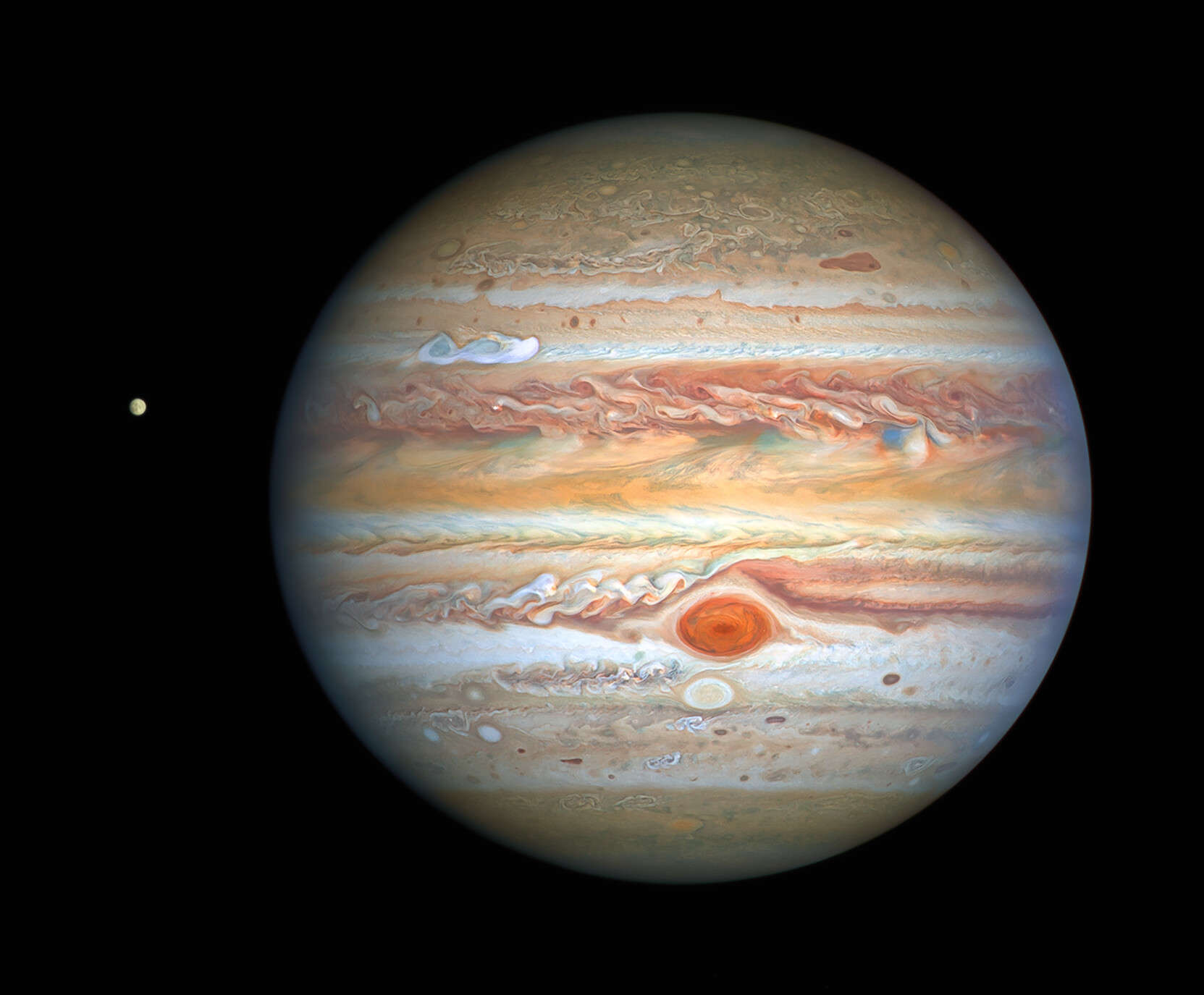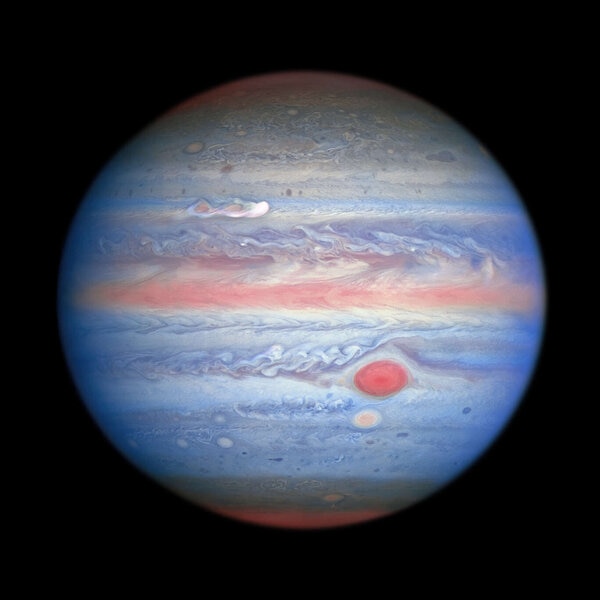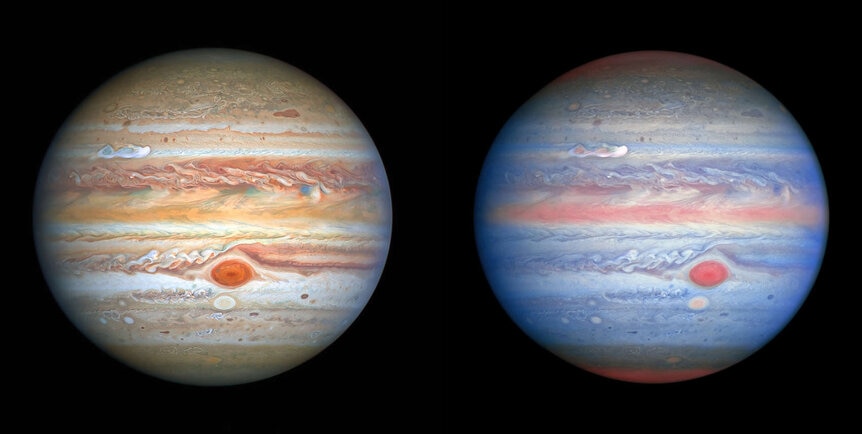Create a free profile to get unlimited access to exclusive videos, sweepstakes, and more!
Hubble sees Jupiter erupt with storms big enough to swallow Earth

In July, Jupiter, the solar system's biggest planet, reached opposition. That's when it's opposite the Sun in the sky, which is important for two reasons. One is that it rises when the Sun sets, so it's up all night, making it easier to observe.
More importantly, that means that's when Earth and Jupiter are closest together in space — think of it like the Earth passing Jupiter on the inside lane — so the planet appears biggest in the eyepiece as well.
And when your eyepiece is the Wide Field Camera 3 on Hubble Space Telescope, well, the view is pretty dang nice.
Wow. This image was taken in visible light on 25 August 2020, just a few weeks after opposition. It's part of an ongoing program called OPAL (Outer Planets Atmospheres Legacy) to use Hubble to take images of the solar system four giant planets (Jupiter, Saturn, Uranus, and Neptune) once per year or so to keep up with their atmospheric antics.
Just in time, too. A big storm plume erupted from deep beneath Jupiter's cloud tops in mid-August, which grew rapidly. It's the elongated blue and white streak to the upper left, and by my eye looks to be nearly twice the Earth's diameter in size! Eleven Earths could stretch across Jupiter's width, for comparison.
Jupiter, I shouldn't need to remind you, is a very big planet.
Several new storms have popped up on Jupiter, including two found by amateur astronomers (Clyde's Spot, and another I don't think is named). That happens pretty often, since amateur astronomers look at Jupiter all the time, versus career astronomers who only observe it when they can get telescope time at big observatories. Astronomy is one of the very few fields of science where it's possible for so-called amateurs to make significant contributions, an aspect of my science I love.
Hubble also took an image in near-infrared, at wavelengths just a bit longer than our eyes can see, as well as in the near ultraviolet, at wavelengths too short for our eyes:
That's enhanced color, since we can't see UV or IR. It also has a visible light image in it as well, so this is a peculiar view. Infrared is displayed as red, and ultraviolet as blue. So, for example, material that looks red is either good at reflecting infrared, or good at absorbing ultraviolet (so there's no blue light to see in that part of the image). This helps planetary scientists better understand the cloud structure on Jupiter.
Another obvious feature is the Great Red Spot. It's been shrinking for the past few decades, and is down to a mere 15,700 km wide, only barely enough to swallow the Earth whole (again, Jupiter = very big). It used to be much larger, but at least it does look like the shrinking has slowed. I was never too worried the Spot would dwindle down to nothing — it's existed for centuries at least, so it seems unlikely it'll disappear down its own belly button — but it's nice to see some observational evidence to back that up.
You can also see another enormous storm, called Oval BA (which, without evidence, I have assumed is named after me), nicknamed Red Spot Jr. It used to be red but has faded to a more white color in the past few years. Unlike Earth, with continents and oceans, all we see when we look at Jupiter are the cloud tops so things change all the time, even hour by hour. That's one reason people keep their eyes on the planet.
And its moons, too. To the upper left of Jupiter in the first image you can see its moon Europa, which is a hair smaller than our own Moon. Europa is covered in ice, and has a subsurface ocean as well. Could weird alien life be swimming around there? No one knows, though it's possible. We may know soon enough, once the space probe Europa Clipper launches in a few years and heads over that way.
Jupiter is the fourth brightest natural object in the sky (after the Sun, Moon, and Venus) and is easily visible to someone with average eyesight in the east after sunset right now. With binoculars you can see four of its moons, and with a telescope you can start to see features on the planet itself, like the big whitish equatorial zone and the two redder equatorial belts above and below it. With a bigger 'scope the Red Spot can be seen too, if it happens to be on the side of the planet facing us — Jupiter rotates once every 10 hours. If you observe it early in the evening and then again a few hours later, you can actually see it spin. It's pretty amazing.
If you can, take a look. It truly is an wondrous thing to see for yourself, and you don't even need Hubble for it.





























